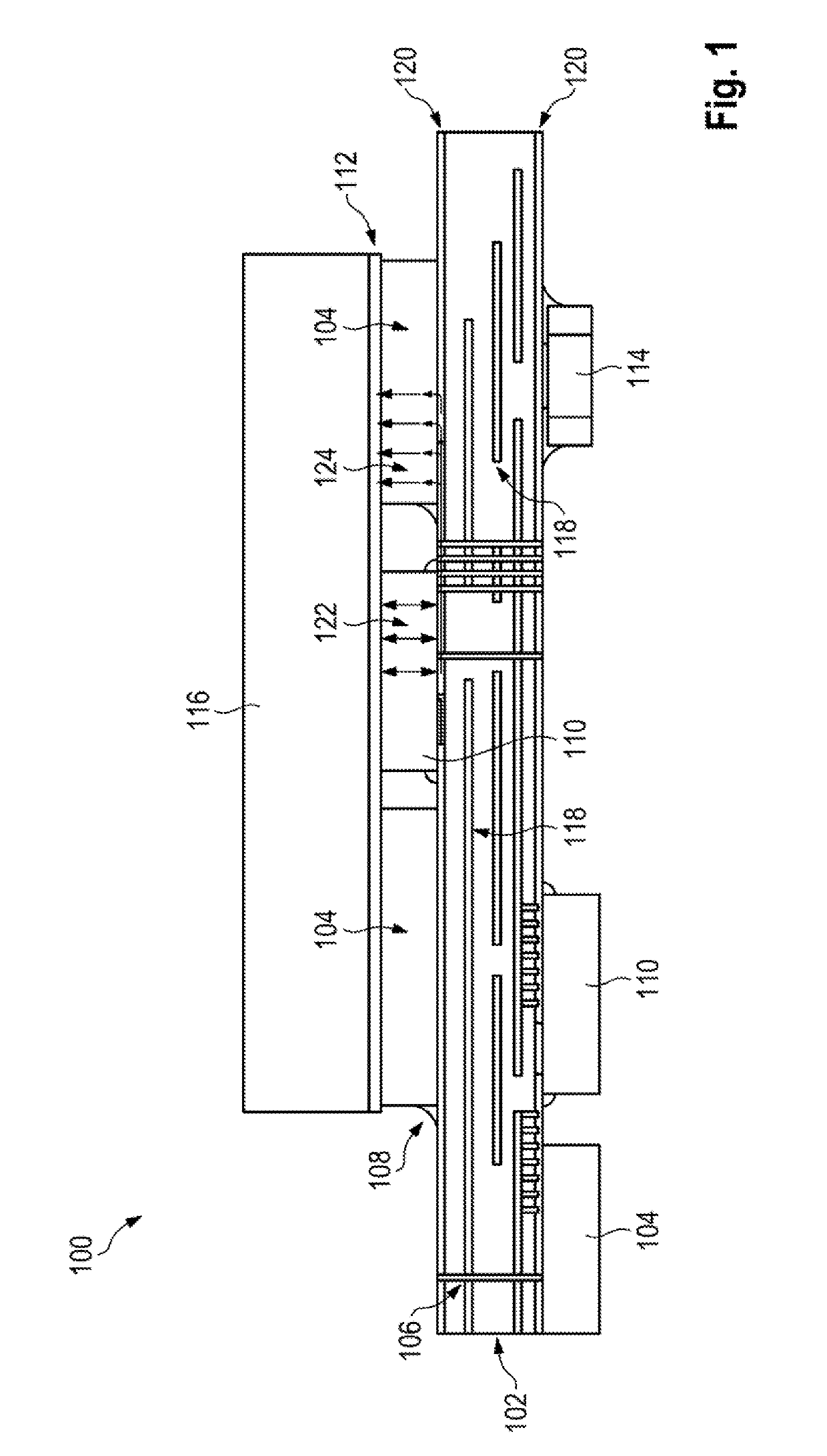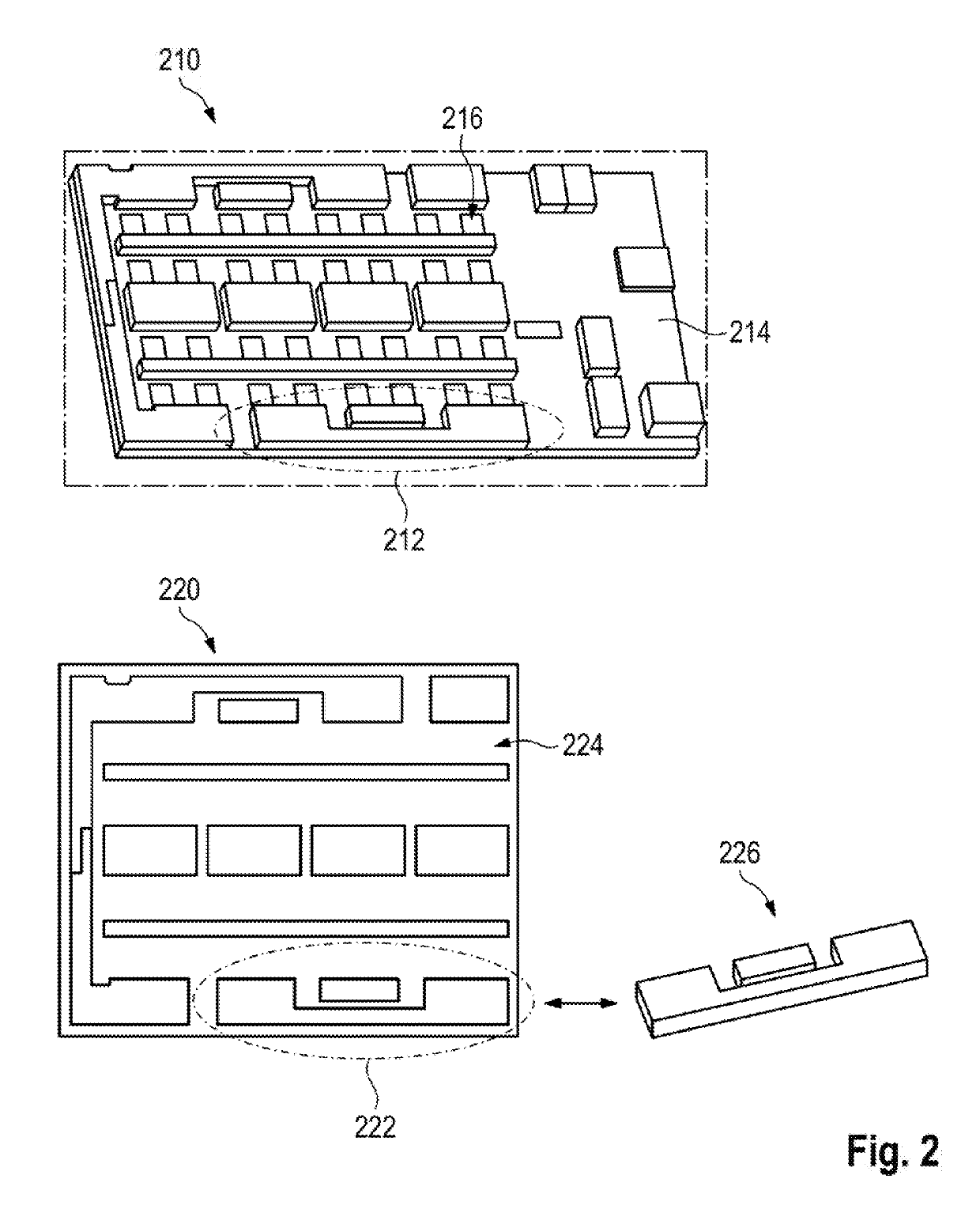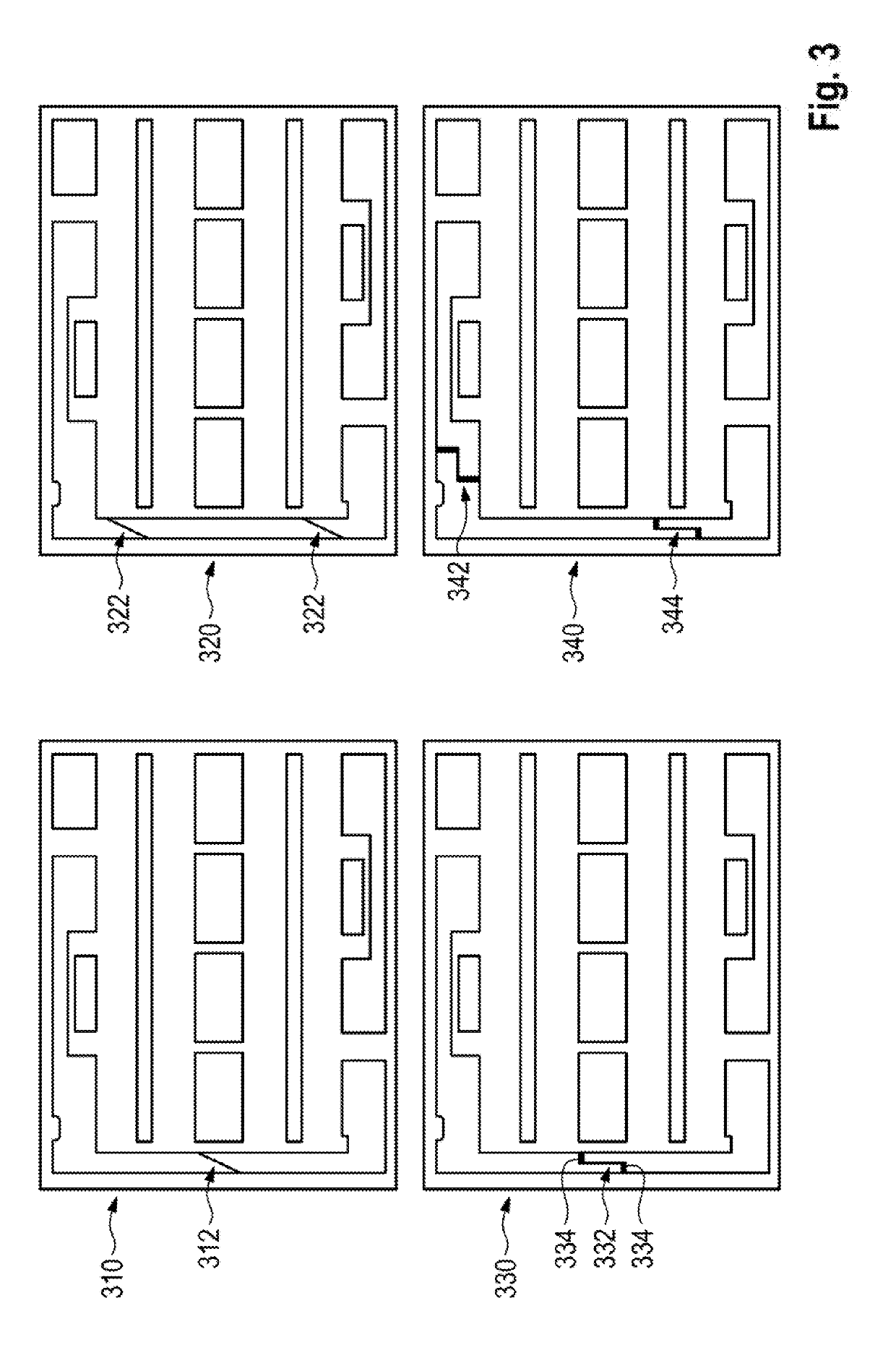Cooling of power electronics circuits
a technology for power electronics and circuits, applied in the direction of printed circuit parts, electrical apparatus construction details, printed circuit non-printed electric components association, etc., can solve the problems of not being able to conduct high currents or absorb waste heat, physical large circuit designs, damage or destroy components, etc., to achieve high thermal conductivity and prevent mechanical stresses
- Summary
- Abstract
- Description
- Claims
- Application Information
AI Technical Summary
Benefits of technology
Problems solved by technology
Method used
Image
Examples
Embodiment Construction
[0049]FIG. 1 shows a schematic illustration 100 of a section through a printed circuit board according to aspects of the invention. A circuit board 102 has inner metallic conductor tracks 118 and, on both surfaces, metallic conductor tracks 120, which run horizontally and can be connected in the vertical direction by means of metallic vias 106. The circuit board 102 is populated on a top side and a bottom side with electronic components, for example shown with a plurality of metal elements 104 and power electronics components 110, and with a capacitor 114 as an example of other components. A respective metal element 104 is situated on a conductor track 120 running on a respective surface of the circuit board 102. Said metal element has a flat top side and has a similar physical height to a respective power electronics component 110. By way of example, said metal element is connected to the circuit board 102 at a location 108 by solder. The power electronics component 110, which may ...
PUM
 Login to View More
Login to View More Abstract
Description
Claims
Application Information
 Login to View More
Login to View More - R&D
- Intellectual Property
- Life Sciences
- Materials
- Tech Scout
- Unparalleled Data Quality
- Higher Quality Content
- 60% Fewer Hallucinations
Browse by: Latest US Patents, China's latest patents, Technical Efficacy Thesaurus, Application Domain, Technology Topic, Popular Technical Reports.
© 2025 PatSnap. All rights reserved.Legal|Privacy policy|Modern Slavery Act Transparency Statement|Sitemap|About US| Contact US: help@patsnap.com



